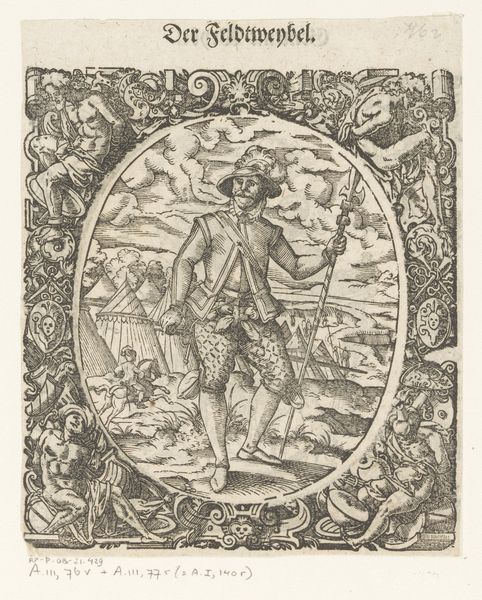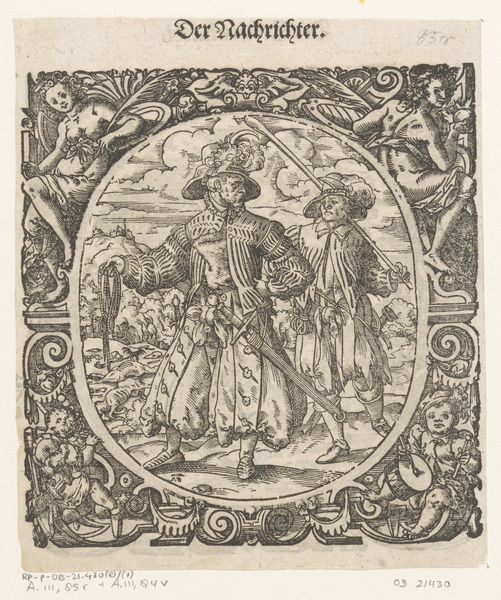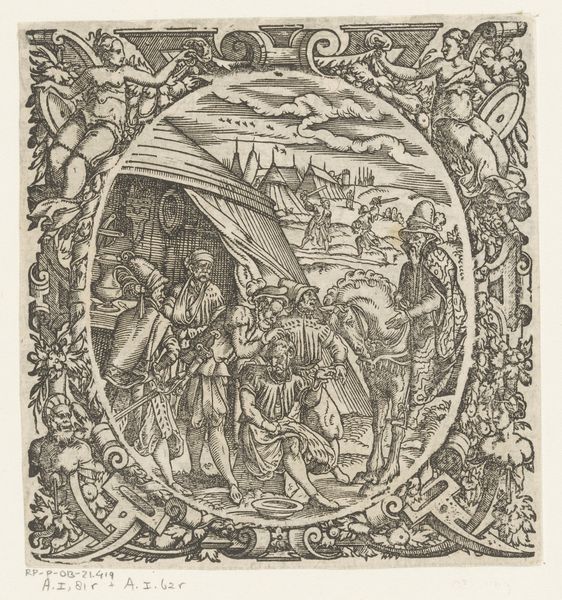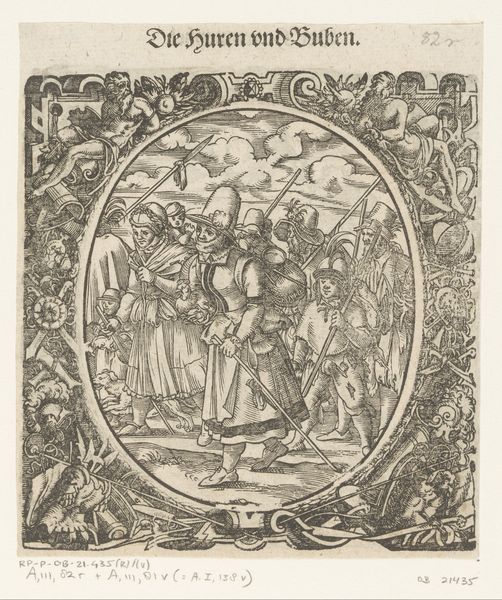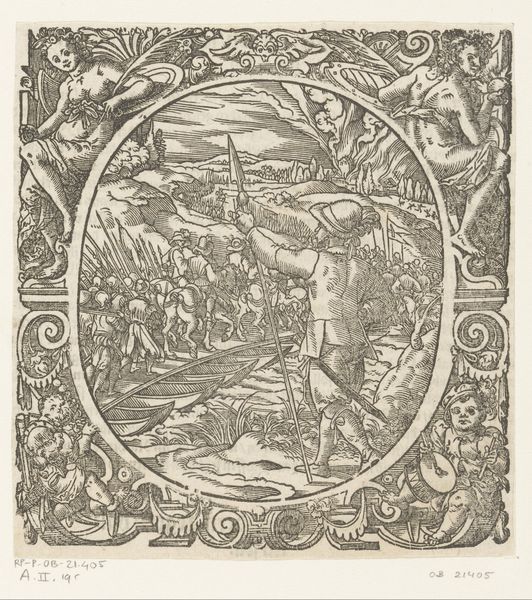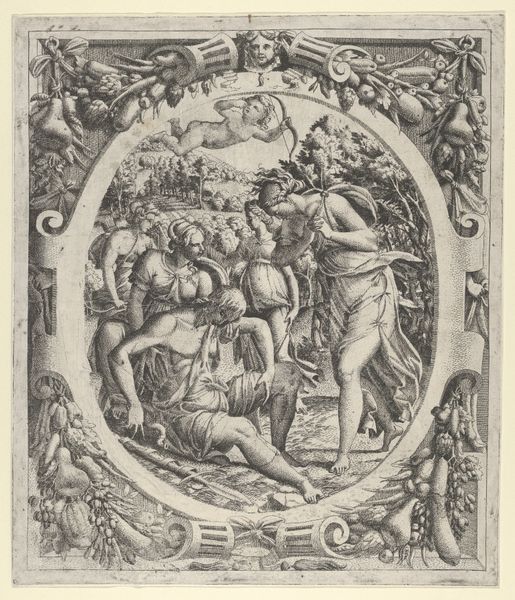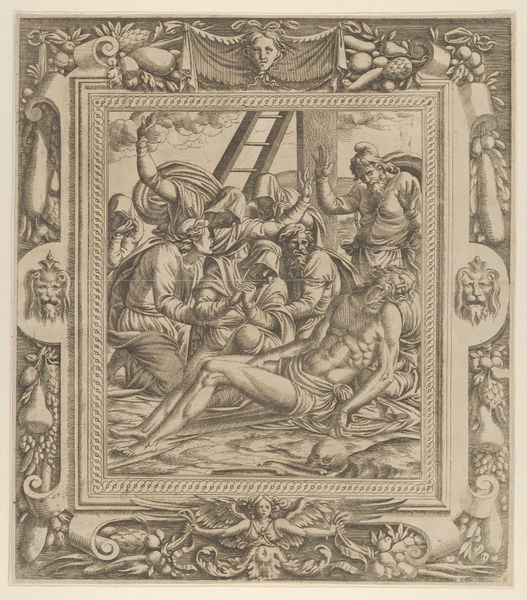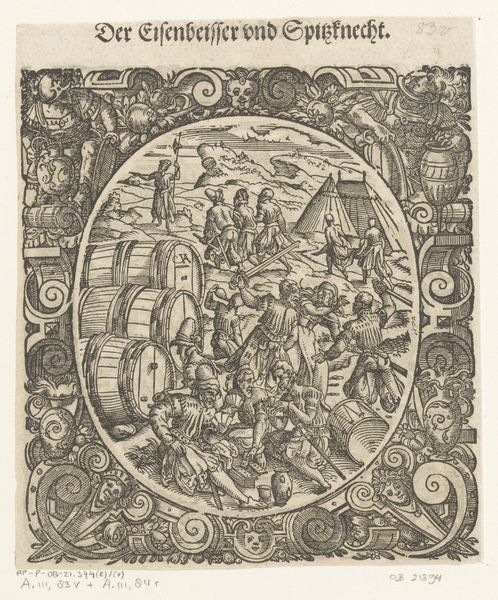
print, woodcut, engraving
#
portrait
# print
#
woodcut
#
history-painting
#
northern-renaissance
#
engraving
Dimensions: height 143 mm, width 134 mm, height 115 mm, width 100 mm
Copyright: Rijks Museum: Open Domain
Jost Amman created this print, "Officer Before a Tent Camp," sometime in the late 16th century, using woodcut on paper. Woodcut is a relief printing process, where the artist carves away the areas that will not be inked, leaving the design standing in relief. Look closely, and you can see how the artist used line to create a highly detailed scene of an officer in armor, with a tent camp in the background. The material properties of wood - its grain and resistance to the blade - dictate the character of the image. The stark contrast between black ink and white paper lends a graphic quality, well-suited to the depiction of military life. Woodcut was a key technology for disseminating images in early modern Europe. Prints like this one made art accessible to a wider audience, and served as a means of communicating information and ideas. The labor-intensive process of woodcutting also speaks to the skill and craftsmanship involved in printmaking at this time. In considering this work, we can appreciate how the choice of material and process shapes not only the appearance of the image, but also its social and cultural significance.
Comments
No comments
Be the first to comment and join the conversation on the ultimate creative platform.

